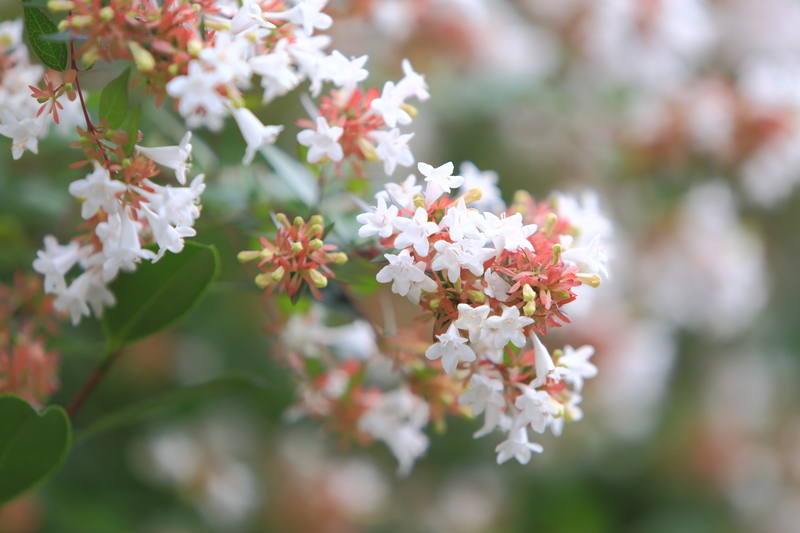Create a Peaceful Retreat with Zen Garden Design Tips
Posted on 17/06/2025
Create a Peaceful Retreat with Zen Garden Design Tips
Are you dreaming of a tranquil oasis in your backyard? The timeless beauty and serenity of a Zen garden make it the perfect solution for anyone seeking a peaceful retreat from the hustle and bustle of daily life. Centered on principles of simplicity, nature, and mindfulness, Zen garden design isn't just about landscaping--it's about creating a sanctuary for relaxation and reflection.
Whether you have a large backyard, a small patio, or even a corner balcony, these expert Zen garden design tips will guide you on your journey to build a calming outdoor space. Read on to discover the essential steps and creative ideas to help you create your tranquil Zen oasis.
What is a Zen Garden?
Zen gardens, also known as karesansui or Japanese rock gardens, have their origins in Buddhist temple landscapes of Kyoto, Japan. These gardens are specially crafted to evoke feelings of calm, contemplation, and meditation. The main elements--rock, gravel, sand, moss, and carefully chosen plants--symbolize larger landscapes such as mountains, rivers, and islands.
- Minimalist by design: Zen gardens thrive on simplicity and minimalism
- Symbolism: Rocks and sand represent natural features like mountains and water
- Focus on tranquility: Every feature is intended to inspire peace and mindfulness
By integrating these components and techniques into your Zen landscape, you can create an outdoor haven perfect for meditation, relaxation, or a quiet cup of tea.

Benefits of a Zen Garden Retreat
Zen gardens do more than just beautify your outdoors. Here are some profound benefits you can experience by creating your own peaceful retreat:
- Stress Reduction: Spending time in a calming environment can decrease stress levels.
- Enhanced Mindfulness: The act of raking sand or arranging stones cultivates presence and calm.
- Low Maintenance: Traditional Zen gardens require less upkeep compared to conventional gardens.
- Year-Round Beauty: With evergreen plants and gravel features, your garden looks serene no matter the season.
- Natural Habitat: Moss, stones, and water attract butterflies, birds, and other wildlife, helping you reconnect with nature.
A peaceful Zen retreat is the ideal antidote to busy, modern-day living.
Essential Elements for Zen Garden Design
A successful Zen-style garden revolves around key components thoughtfully placed for harmony and spiritual depth. Here are the foundational elements you should consider:
1. Rocks and Boulders
- Symbolism: Represent mountains, islands, or nature's permanence
- Placement: Arrange asymmetrically for a natural look. Odd-numbered groupings work best.
- Types: Choose weathered stones and locally sourced boulders for authenticity
2. Gravel and Sand
- Function: Stand in for rivers, lakes, or the ocean
- Design Tip: Rake sand or gravel into flowing patterns to depict waves, ripples, or currents
- Maintenance: Sift regularly to keep it fresh and pristine
3. Water Features
- Traditional Zen gardens are dry, but modern interpretations may add water for sensory relaxation.
- Options: A simple stone basin (tsukubai), small pond, or bubbling fountain
- Tranquility: Sound of running water enhances the calming atmosphere
4. Moss and Ground Covers
- Moss: Brings lushness and a touch of old-world serenity
- Low-Maintenance: Thrives in shaded, moist environments
- Alternatives: Use low-growing ground covers like creeping thyme if moss isn't suitable for your climate
5. Plants and Trees
- Choose Wisely: Stick to evergreens, bamboo, Japanese maple, azalea, or ornamental grasses
- Simplicity: Avoid overcrowding; focus on a few carefully pruned specimens
- Accent: Place plants asymmetrically for a natural, spontaneous look
6. Garden Structures
- Focal Points: Stone lanterns, bamboo fences, arched bridges, and benches define gathering spots
- Materials: Use stone, wood, or bamboo to keep the style authentic
- Function: These elements should add to the sense of peace--not crowd the landscape
Step-by-Step Guide: Designing Your Zen Garden
Creating a Zen-inspired backyard or patio requires a blend of careful planning, creativity, and respect for the philosophy behind this style. Here is a detailed step-by-step guide to help you design and build your own Zen retreat:
Step 1: Define Your Space
- Whether you are working with a large lawn or a small balcony, outline the area for your Zen garden
- Use stones, wood edging, or a bamboo fence to give the space definition
- Balance open negative space with focal features
Remember, the beauty of Zen landscaping is that it adapts to any size--from expansive yards to compact city courtyards.
Step 2: Choose Your Materials
- Select natural, harmonious materials: local river rocks, gravel, sand, bamboo, and weathered stone
- Stick to a calming, neutral color palette: whites, grays, tan, and plain green
- Avoid overly decorative or brightly colored elements that can distract from the garden's peaceful aura
Step 3: Build the Foundation
- Level and clear the soil, lay down landscape fabric to prevent weeds
- Pour and spread your chosen gravel or sand, keeping the surface even
- Rake in signature Zen patterns--try circles, ripples, or winding lines, adjusting with the seasons for ongoing mindfulness
Step 4: Arrange Rocks Strategically
- Plan rock placement with great care--these are the 'mountains' of your landscape
- Group in odd numbers, favoring asymmetrical layouts with varying heights and sizes
- Sink larger stones slightly into the ground for a natural, rooted appearance
Pro tip: Stand back and view your garden from multiple angles during this process to ensure harmony and balance.
Step 5: Incorporate Greenery
- Plant moss, evergreen ground covers, or ornamental grasses sparingly
- Add a Japanese maple, bamboo, or blooming azalea for a pop of color and elegance
- Keep pruning tight for a clean, minimalist silhouette
Step 6: Add Water Features & Accents
- Install a subtle water feature--a bamboo fountain, stone basin, or koi pond
- Position a stone lantern or sculptural accent for added visual interest
- Consider a weatherproof wooden bench or a smooth stone for seating and meditation
Step 7: Create Inviting Pathways
- Use stepping stones or gravel paths to guide movement through your retreat
- Paths should feel organic--not rigid--for a sense of wandering through nature
- Line walkways with moss, pebble, or simple borders for cohesion
Step 8: Personalize Your Sanctuary
- Add meaningful ornaments or subtle lighting as desired--less is more in Zen design
- Integrate a weather-resistant chime or bell for soft, meditative sounds
- Reserve a space for meditation, yoga, or tea, making your retreat truly personal
Zen Garden Design Ideas for Different Spaces
Not everyone has a sprawling yard, but that shouldn't limit your tranquility. Here are Zen-inspired garden ideas for all spaces:
Small Patio or Balcony Zen Gardens
- Use square containers filled with white gravel or sand
- Add two or three small rocks and a bonsai tree for a mini version of the classic Zen landscape
- Hang a bamboo screen for privacy and ambiance
Corner or Courtyard Zen Gardens
- Transform an empty corner with sand, a single boulder, and creeping moss
- Install a tiny water feature or stone statuette to elevate the meditative atmosphere
- Layer in a few potted evergreens for depth and color
Large Backyard Zen Retreats
- Create 'rooms' using strategically placed rocks and clusters of bamboo
- Link areas with winding gravel paths and sculptural stone bridges
- Introduce a sheltered seating area for mindfulness, yoga, or outdoor tea ceremonies
Maintaining Your Zen Garden
One of the joys of a Zen-inspired landscape is its ease of care. Here's how you can preserve the beauty and peace of your Japanese-style retreat:
- Rake sand or gravel regularly to maintain crisp patterns
- Gently prune plants to keep their shape minimalist
- Remove fallen leaves or debris to showcase rocks and ground covers
- Clean water features every few months to prevent algae
- Replace moss or re-sand as needed for a fresh look
Consistency is key. Even a few minutes of upkeep every week will ensure your peaceful sanctuary stays beautiful and rejuvenating year-round.
Zen Garden Design Tips: Enhancing Tranquility
Embrace Asymmetry
Perfect symmetry rarely exists in nature. Arrange rocks, plants, and accents in uneven groupings to create a spontaneous, organic look that feels instantly more serene.
Let Negative Space Breathe
Don't fill every inch of your Zen garden. The contrast between empty and filled spaces highlights the beauty of each element and offers space for contemplation.
Use Subtle Lighting
Install low-voltage LED garden lights or soft lanterns along pathways and near focal stones. This creates a tranquil ambiance, especially during dawn and dusk, without overpowering the garden's natural feel.
Encourage Wildlife
Moss, water, and evergreen shrubs attract butterflies, dragonflies, and birds--making your Zen retreat feel more alive and in tune with nature.
Practice Mindful Gardening
Zend design isn't just about the finished product, but also about the act of creating and maintaining it. Regularly raking patterns, pruning, or meditating in your garden deepens your connection to tranquility.
Common Mistakes to Avoid in Zen Garden Creation
- Overcrowding: Resist the temptation to over-plant or clutter the space with decor
- Excess color: Stick to natural, calming shades; too many bright flowers disrupt the peaceful vibe
- Ignoring scale: Ensure rocks and features suit the size of your garden
- Neglecting maintenance: Regular upkeep is essential for lasting beauty and serenity
- Skipping a focal point: Every great Zen garden has a single feature--like a stone, lantern, or tree--that draws the eye and mind to stillness

Inspirational Zen Garden Features and Accents
- Stepping stone pathways winding through gravel "streams"
- Bamboo screens or fences for privacy and wind protection
- Ornamental basins (tsukubai) for simple water rituals
- Granite lanterns or pagodas for spiritual weight
- Zen sand rakes for interactive, peaceful pattern-making
- Bonsai trees for tabletop or patio Zen gardens
Final Thoughts: Your Personal Zen Sanctuary Awaits
Whether you're aiming for a grand Zen garden retreat or a modest Zen-inspired patio corner, the journey is as rewarding as the destination. By applying these Zen garden design tips, you'll cultivate a space defined by calm, simplicity, and profound beauty.
Start small, observe nature, and let inspiration guide you. With each rock you place and each plant you prune, you're building more than a garden--you're creating a peaceful retreat where your mind and spirit can truly rest.
Transform your home into a haven of tranquility--your perfect Zen retreat is only a garden away!

